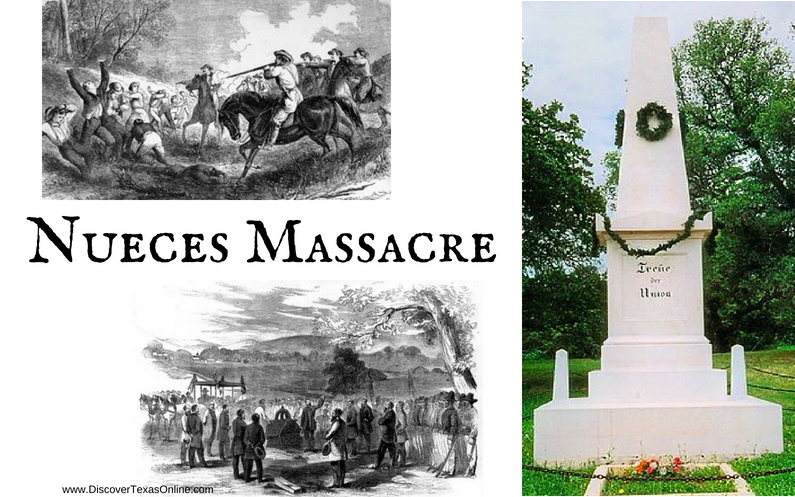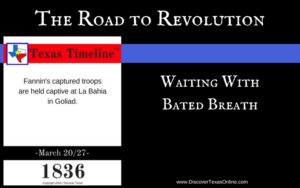 “Comfort” and “Massacre” are two words that don’t sound like they should go together, but they’re the key to a sad sub-chapter of Texas history that’s important for the lessons it can teach us.
“Comfort” and “Massacre” are two words that don’t sound like they should go together, but they’re the key to a sad sub-chapter of Texas history that’s important for the lessons it can teach us.
In 1854, an enterprising immigrant named Ernst Altgelt led a group of German pioneers to the Hill Country of Texas. These colonists were peaceful intellectuals–“freethinkers” of the German enlightenment period. Together they founded seven flourishing communities founded on the principles of equality, individual freedom, and self-determination.
When the Civil War brought secession less than a decade later, these German immigrants wanted no part in it. They had worked hard to make peace with the native Indian tribes who had formerly ravaged the Hill Country region. Their goal was to live peacefully with all men. They owned no slaves, and they didn’t support secession. They felt loyal to the United States which had so recently welcomed them.
By May of 1862, any support of the Union made Confederate Texas officials nervous. Texas was placed under martial (military) law, and all men over the age of 16 were ordered to swear an oath of allegiance to the Confederacy. Refusal would be considered an act of rebellion. Confederate Captain James Duff, who was in charge of troops in the Hill Country, swore to hang anyone who did not support the Confederacy.
The men of Comfort felt that they had only three choices. They could be forced to join the army and fight for a cause they did not believe in, they could resist and be hung, or they could leave their homes and flee to Mexico.
They decided to take the least violent option.
On August 1, 1862 about 65 men and boys gathered at Turtle Creek, about 15 miles west of Kerrville, and headed for Mexico. Armed for their own protection and provision, they set off at a leisurely pace, stopping to hunt and gather wild honey. They might have reached Mexico in four or five days, but after eight days they had only reached the Nueces river. Some in the group wanted to travel faster, but the group leader, Fritz Tegener, felt there was no cause to fear. What Tegener didn’t know was that one of their members had betrayed them.
Captain Duff dispatched nearly a hundred men, along with the betrayer, to pursue them.
The German dissenters pitched camp near a cedar brake on the banks of the Nueces River. They had seen horseman in the distance, so they posted guards and agreed to leave early the next morning.
The horsemen they’d seen were Confederate soldiers, most from nearby Kerrville, under the command of Lt. C. D. McRae. In just five days of hard riding, they’d caught up with the Germans. Now they crept in close to be in position to attack at first light, but two of the German guards stumbled onto the soldiers at around 3 o’clock in the morning. Guns blazed, and then the camp broke out in confusion. Twenty-eight Germans used the darkness and confusion as an opportunity to evade the fight and head back home, leaving less than 40 men to face the Confederate soldiers, who launched a full attack just before dawn.
By all accounts, the Germans fought bravely, but they were caught out in the open and greatly outnumbered. In the fall-out, 19 of the dissenters were killed or wounded. The Confederates later claimed that they moved the wounded Germans into the shade and tended their wounds, but as soon as the more moderate officers went off in search of those who fled, those with radical Confederate sentiments dragged them off and executed every man and boy in cold blood. Nor was that the end of the bloodshed. Over the next few weeks, 17 additional dissenters who had fled were rounded up and executed as well.
As rumors spread and no word came from the German refugees to their families back in Comfort, at least one brave wife and mother went in search of the truth. Tradition has it that she found the remains of the men and boys not with their wounds bound, but their wrists. The gory scene made the truth plain. Whether or not the Germans were “enemies of the Confederacy” who had attempted to defend themselves when they were attacked, the way they died made this not a battle, but a massacre.
At least one of the Germans made it to Mexico. From there he traveled by ship back to the United States to join the Union army. Home again on August 1, 1865, he led a group from Comfort to the site of the massacre to retrieve the sun-bleached bones of their friends and loved ones. They are buried together in a single grave in Comfort, Texas. On August 10, 1866 the townspeople erected a limestone monument with the names of all who had been executed at the Nueces or hanged later, proclaiming them “Treue der Union”–True to the Union. This is the only monument to unionism dedicated by southern citizens in former Confederate territory.
For many years, there were no comfortable feelings between the German citizens of Comfort and their English-speaking neighbors in Kerrville.
What do you learn from this? Feel free to leave comments!



